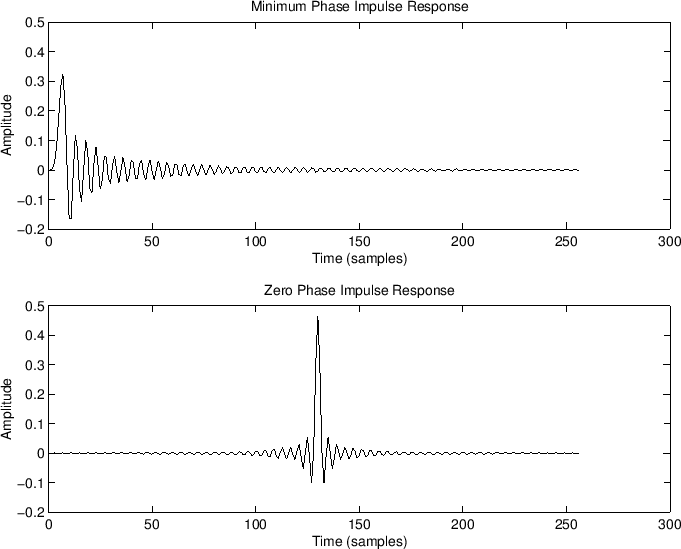Headphones are minimum phase devices so whatever frequency response corrections are done by eq must also do the phase "corrections" required to keep it minimum phase device. I keep corrections in quotes because the headphones don't have any phase problems being minimum phase devices. Using minimum phase filters ensures that the frequency response and phase response stay in sync and the result is the optimal one. Unless one enjoys non-minimum phase behaviour with headphones but I see no reasone why anyone would.
The only use case I've heard of (but there could be more) for linear phase filters are mixing drums recorded with multiple mics because the phases need to be correct which are naturally distroted due to different delays for mics in different locations. Or something like that. I'm not a recording engineer so take this with a grain of salt. Room acoustic corrections can use mixed phase filters to fix the frequency response and phase problems in the room (which are mostly but not always minimum phase) but here both need to be controlled separately and linear phase filters won't do.
So you are the man behind AutoEQ? it's a pleasure.
I am no expert either (btw, I have never seen any real expert, besides perhaps Bob Katz, the rest are trying there best).
From what I understand minimum phase is limiting phase shifts to the ones caused by magnitude shifts. excess phase would be what is caused by reflections. So far so good.
Does that mean phase shifts caused py magnitude shifts are "good phase shifts"? I don't thinks so, they are delay, and delays are not got.
linear phase filters correct magnitude without causing phase shifts on the other hand.
audio engineers use minimum phase EQs on sources(!) because the shifts are actualy an "desireble effect" (they also have much lower latency btw).
Now in case of reproducing devices we don't want those colorizing effects (in theory). We want to reproduce as transperent as possible.
I am not saying that liniar phase correction is better; I actualy don't know. But you have not offered a real explenation why minimum phase filters are the way to go.
Anyways, (natural) minimum phase shifts seam to be always single digit ms and therefore not audible. when I mentioned MP vs LP in this topic I responded to the before mentioned cases of people missing something from the sound after EQing, and sugesting this COULD be caused by some extreme phase shifting in case of extreme MP EQing. also I want to make clear that I mentioned this with a "?". I actualy bet on the Harman boost for the cause, as it masks the rest of the spectrum.
EDIT: if we correct a speaker to flat, we are actualy counter-shifting the existing phase shifts with MP filters, right? that's why MP makes sense for correcting the direct sound. Now in case of heaphones we are actualy going the oposite way: a "huge mountain" of magnitude shift is percieved flat. So we are not counter-shifting here

